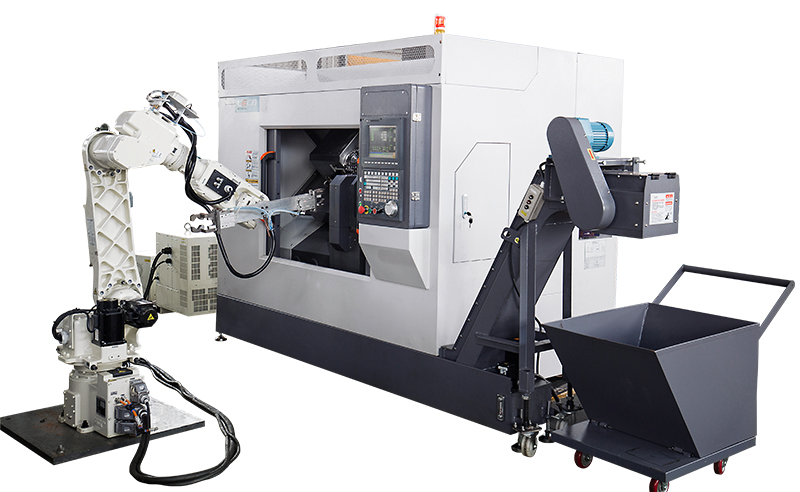May. 10, 2022
CNC turning is one of the core methods of manufacturing. It allows the production of cylindrical parts with various contours.
In mechanical engineering, you cannot bypass the shaft to transfer power from the motor to the moving part. Of course, the shaft needs to rotate. But CNC turning and boring have many uses in various industries to produce parts that are usually axis symmetrical.
Double Head CNC Lathe DNL081/DNL081G
Turning is a subtractive machining process that uses cutting tools to remove material to create cylindrical parts. As the part rotates, the tool itself moves along the axis of the machined part, resulting in a helical tool path.
The term turning refers to the production of a part by performing a cutting operation on an external surface. The opposite of turning is boring, for example, lathes are used to create hollow parts.
Historically, this lathe was one of the first machines of its kind to produce parts in a semi-automated manner. Today, most companies offer CNC turning services. This means that the process is largely automated from start to finish.
CNC means Computer Numerical Control, which means that a computer system controls the machine. The input is a digital code. This controls all tool movements and rotation speeds as well as other supporting actions, such as the use of coolant.
What does the turning process actually involve? While the cutting itself is very simple, we will look at the entire sequence here, which actually starts with the creation of a CAD file.
The steps of the process are
● Create a digital representation of the part in CAD
● Creating the machining code from the CAD file
● CNC lathe setup
● Manufacturing of the turned part

Double Head CNC Lathe DNL081/DNL081G
In addition to the types of lathes we described earlier, there are other categories based on suitable lathe materials. Wood, metal and glass all have different lathes as they all require some specific qualities as well as cutting speeds.
Material profiles, square, round, hexagonal, etc. are all available. As shown in one of the videos above, having a profile other than round will come in handy if the final part is not round in all parts.
Materials suitable for turning include
● Metal
● Wood
● Glass
● Plastic
● Wax, etc.
The parameters of CNC turning depend on various aspects. These include the material of the part and tool, the size of the tool, finishing requirements, etc.
The main parameters of CNC turning are
● Spindle speed. In revolutions per minute (rpm), it shows the speed of rotation of the spindle ( N ) and therefore the workpiece. The spindle speed is directly related to the cutting speed, which also takes the diameter into account. Therefore, if the diameter varies significantly, the spindle speed should vary to maintain a constant cutting speed.
● Workpiece diameter. As mentioned earlier, this plays an important role in achieving the correct cutting speed. The symbol is D and the unit is mm.
● Cutting speed. The formula for calculating the cutting speed is V= πDN /1000. it shows the relative speed of the workpiece to the cutting tool.
● Feed rate. The unit is mm/rev and the symbol is s. The cutting feed shows the distance that the cutting tool moves per revolution of the workpiece. The distance is measured axially.
● Axial depth of cut. Very self-explanatory, as it shows the depth of cut in the axial direction. It is the main parameter oriented to the operation. Higher feed rates put more stress on the cutting tool and thus shorten its life.
● Radial depth of cut. In contrast to axial cutting, it shows the depth of cut perpendicular to the axis. Again, a lower feed rate helps to extend the tool life and ensure a better finish.
Turning is one of the pillars of manufacturing. It is preferable to use this manufacturing method to obtain accurate results for axisymmetric parts. Flexibility and throughput allow for high volume manufacturing with virtually identical results.
Today, large CNC machining centers may have both CNC milling and turning capabilities. Milling machines add an extra layer of functionality that makes these machines very powerful in manufacturing complex parts.
Previous: None
Next: None